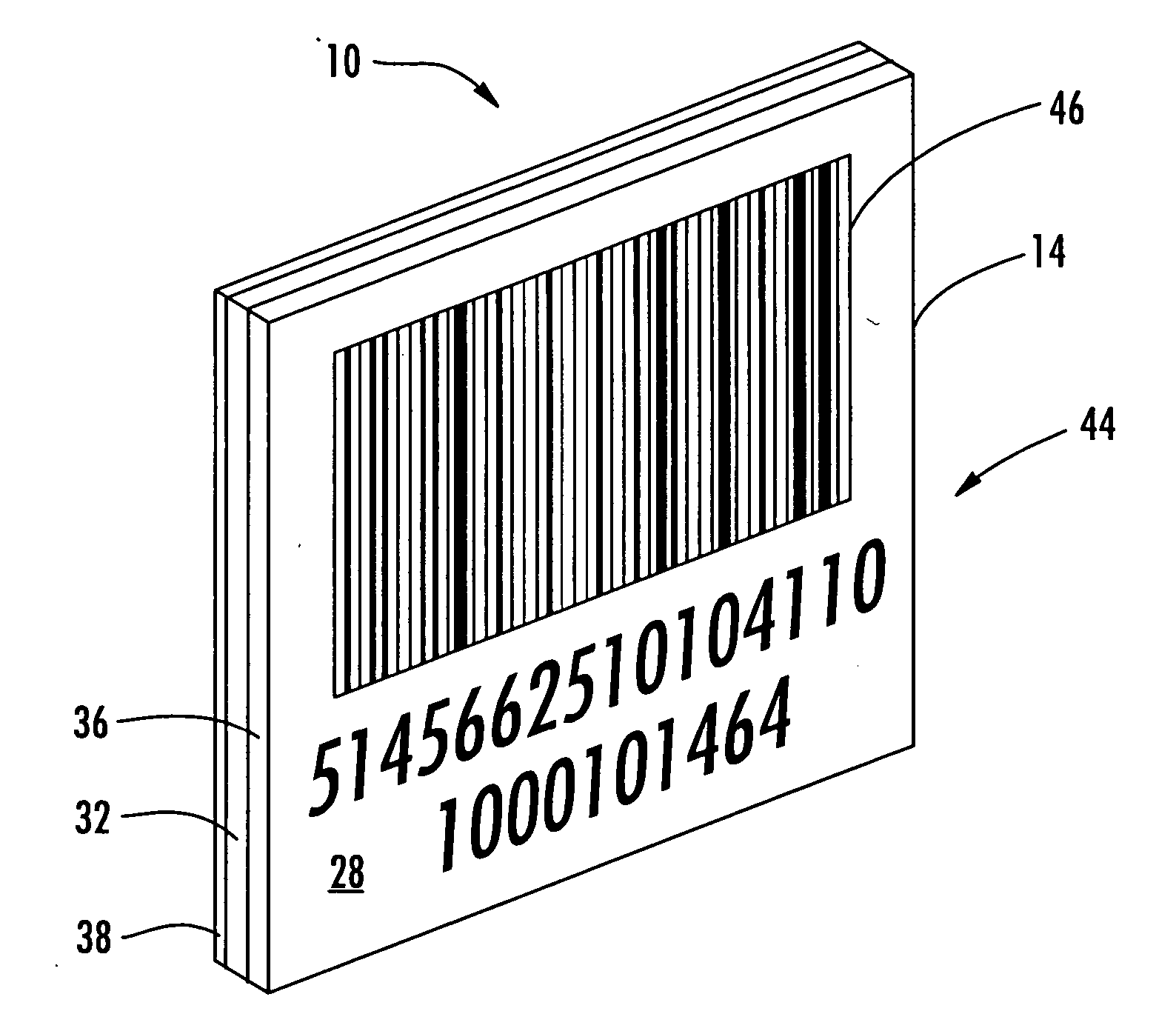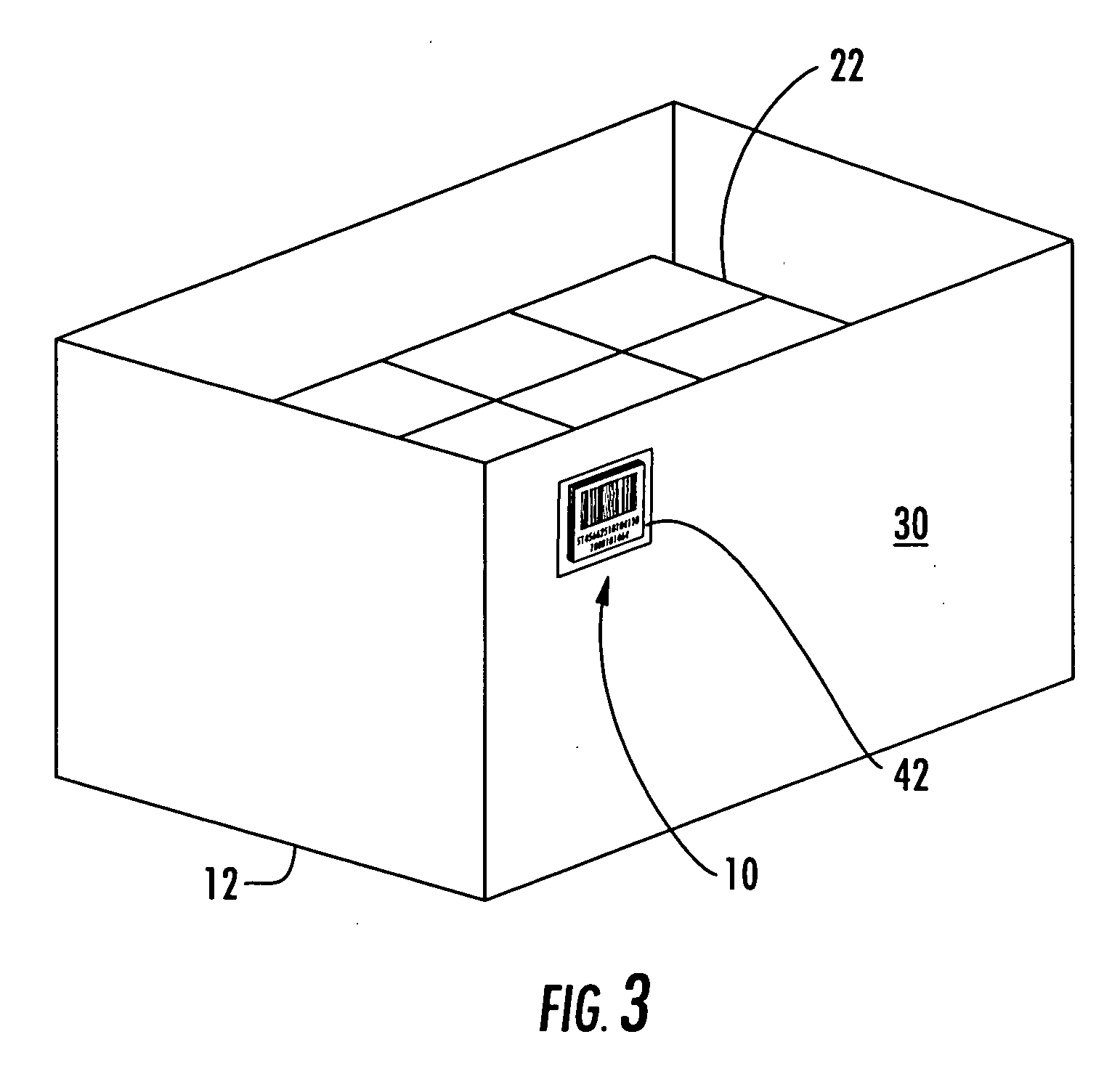RFID asset identification systems
- Summary
- Abstract
- Description
- Claims
- Application Information
AI Technical Summary
Benefits of technology
Problems solved by technology
Method used
Image
Examples
Embodiment Construction
[0017] As shown in FIGS. 1-3, this invention is directed to an RFID tag 10 usable to identify and track contents 22 of a shipping container 12, also referred to as an asset, and to identify and track the shipping container 12 itself. The RFID tag 10 is configured to enable shipping facilities to perform these functions with equipment that is currently usable by the shipping facilities. Thus, the RFID tag 10 is configured to increase participation by employees at the shipping facility in an asset tracking system that includes the RFID tag 10 by reducing the burden on the employees and the time required to participate in the system.
[0018] In at least one embodiment, as shown in FIG. 2, the RFID tag 10 may be formed from a body 14 that includes an RFID system 16. The RFID tag 10 may be an active or a passive RFID tag. The RFID system 16 may include at least one memory storage device 18 and an antenna 20. The antenna 20 may be any antenna capable of operating within an RFID tag. The me...
PUM
 Login to View More
Login to View More Abstract
Description
Claims
Application Information
 Login to View More
Login to View More - R&D
- Intellectual Property
- Life Sciences
- Materials
- Tech Scout
- Unparalleled Data Quality
- Higher Quality Content
- 60% Fewer Hallucinations
Browse by: Latest US Patents, China's latest patents, Technical Efficacy Thesaurus, Application Domain, Technology Topic, Popular Technical Reports.
© 2025 PatSnap. All rights reserved.Legal|Privacy policy|Modern Slavery Act Transparency Statement|Sitemap|About US| Contact US: help@patsnap.com



